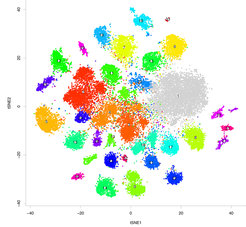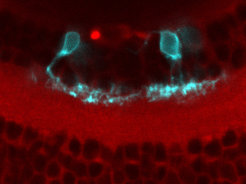Molecules, cell types, circuits

Building a catalog of neuronal cell types using single-cell transcriptomics
Our brain translates external signals and internal state into behavior. This process is realized by a myriad of diverse neurons, which exhibit distinct molecular, morphological, connectional and functional properties. Transcriptional profiling of these cells reveals how cell types develop, take shape and connect into circuits. We wish to answer the following questions: What exactly are the cell types that build the brain? How are they connected to each other? And what is their function?
Localizing gene products across cell types within neural circuits

How are different cell types distributed across brain areas? We use spatial transcriptomics to describe the transcriptional landscape of the intact brain and resolve how distinct cell types are embedded in their natural tissue environment.
Determining the contribution of specific cell types to circuit function
A battery of experimental tools, such as genome engineering, functional imaging or chemogenetic and optogenetic manipulations, help us to ultimately correlate discrete transcriptional signatures with morphological and functional properties of cell types in the small and translucent brain of the zebrafish larva.

